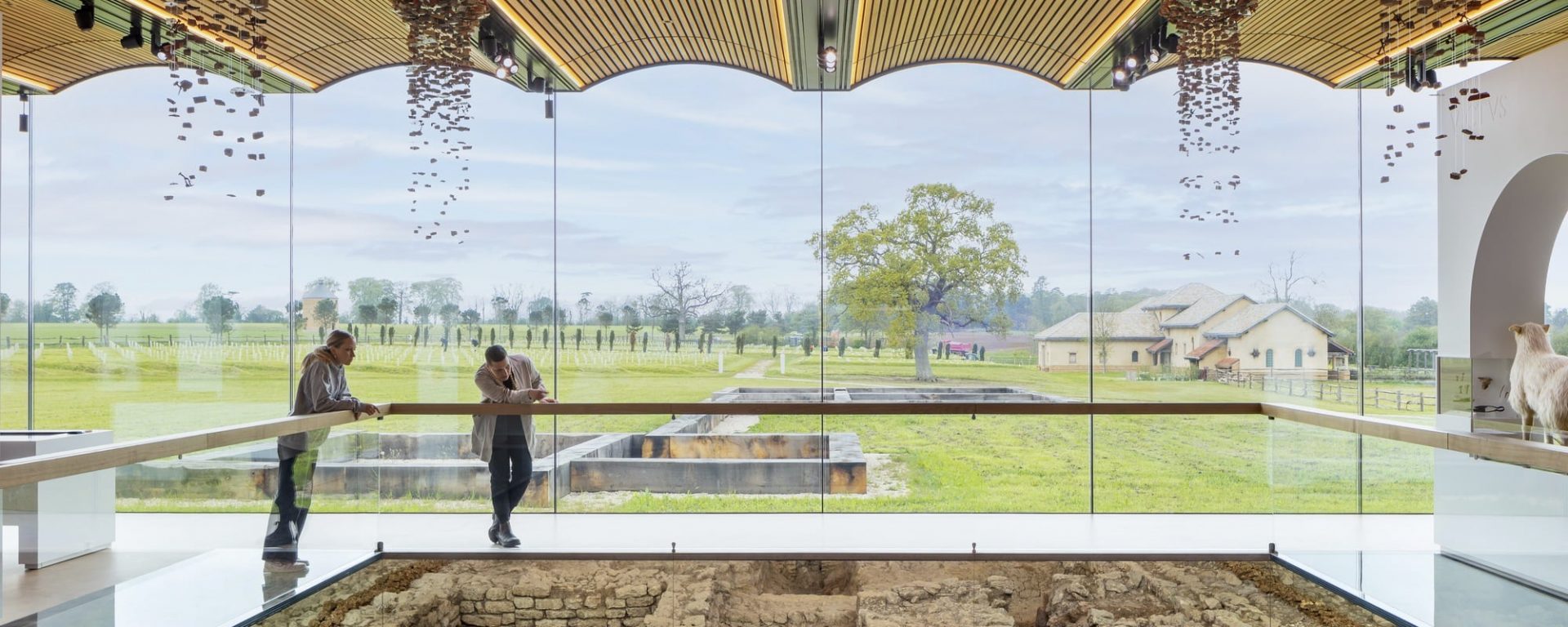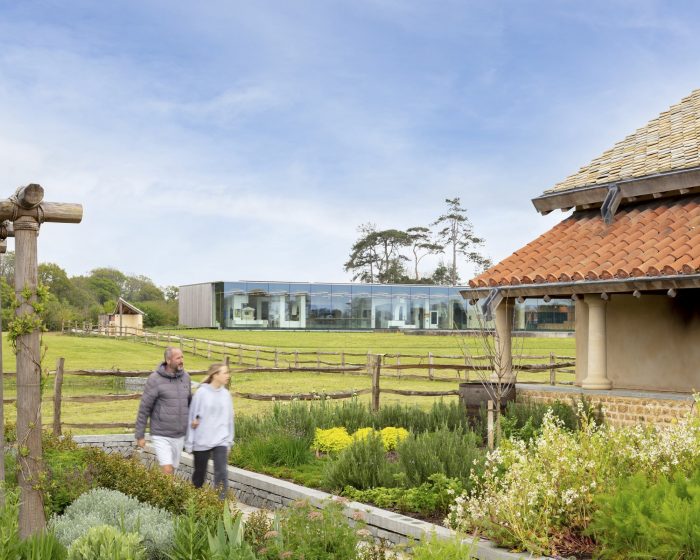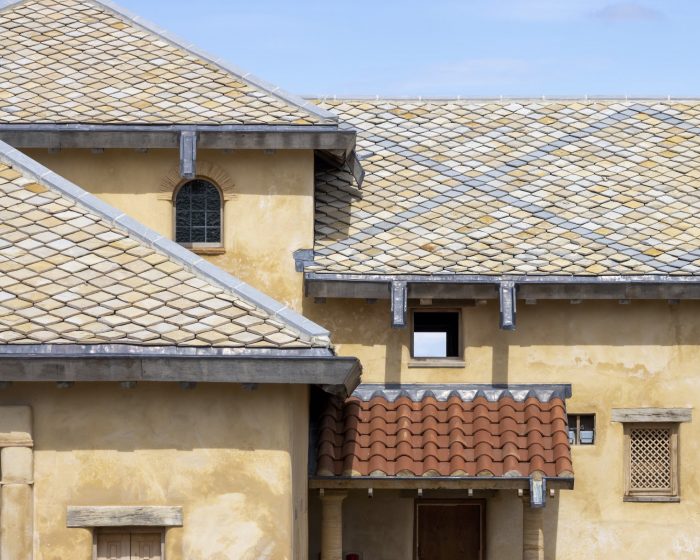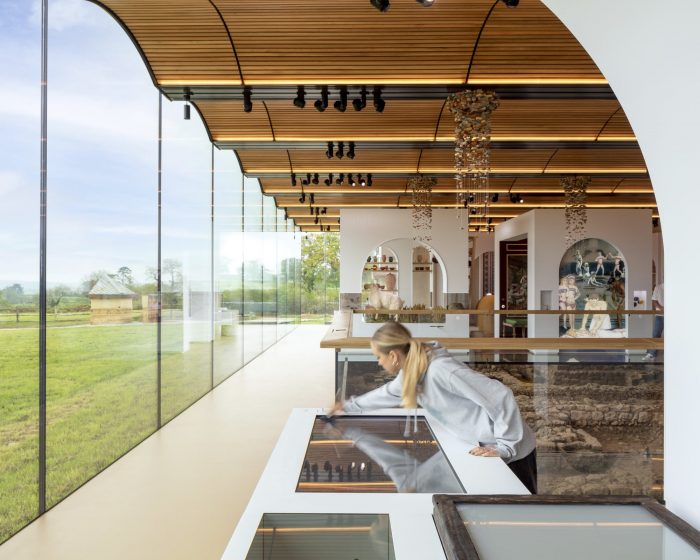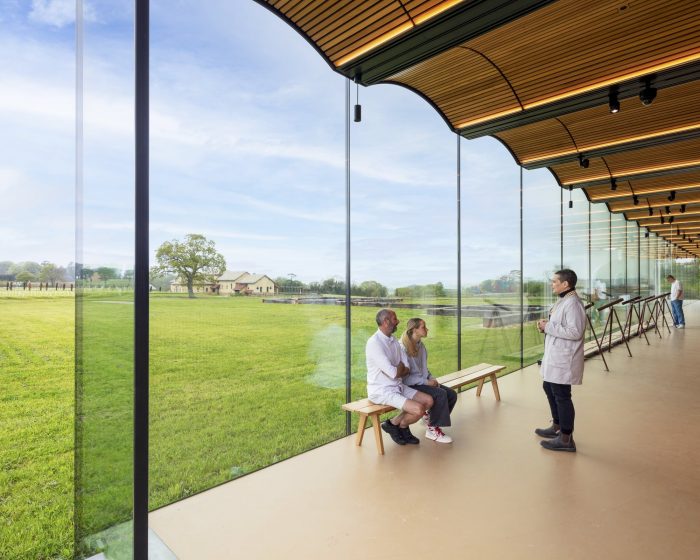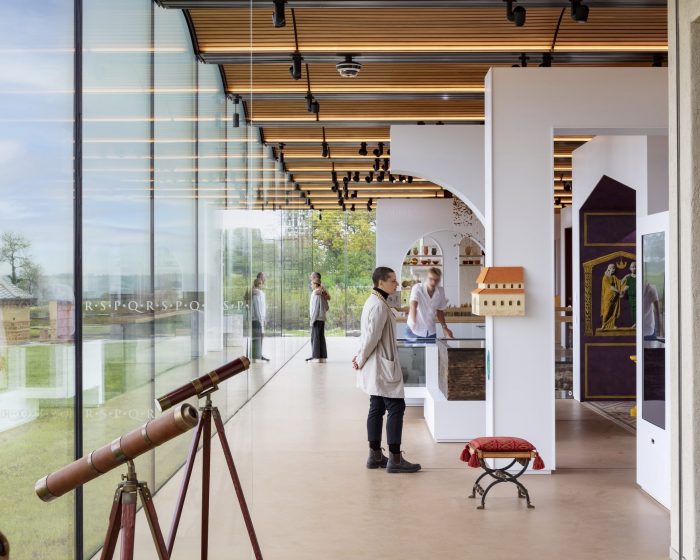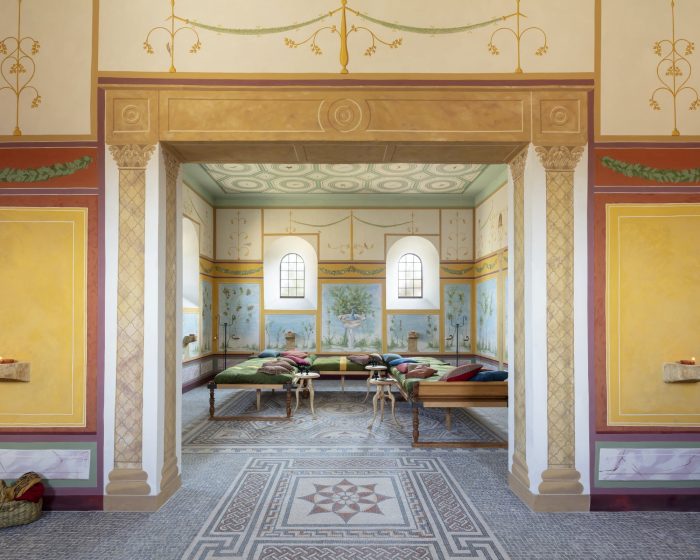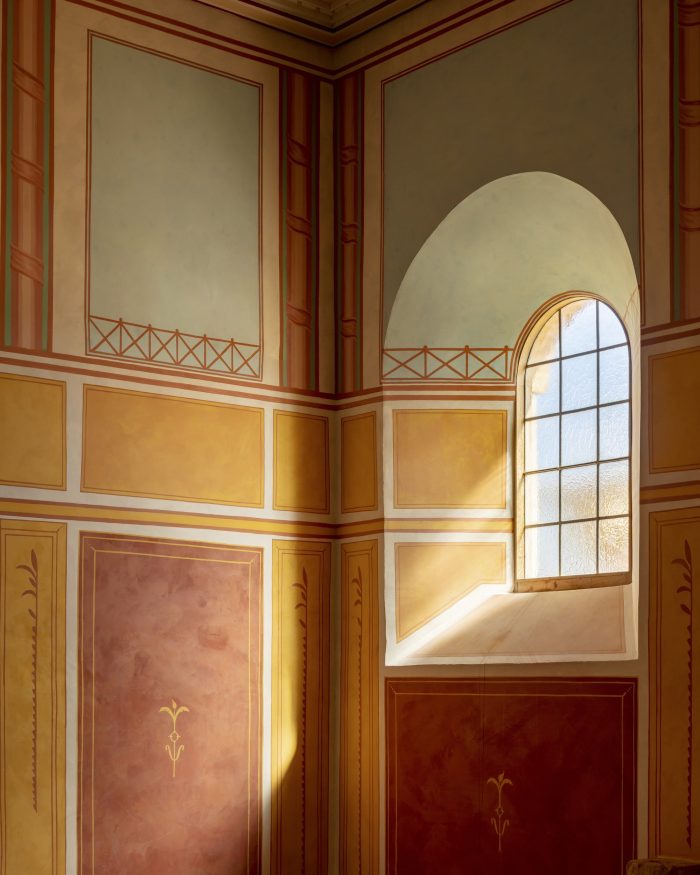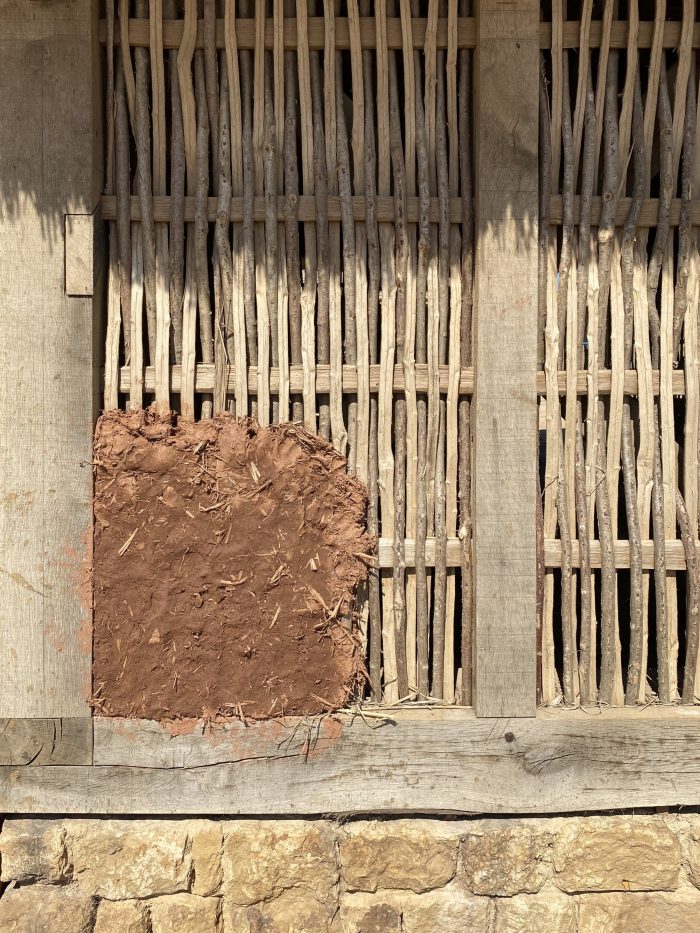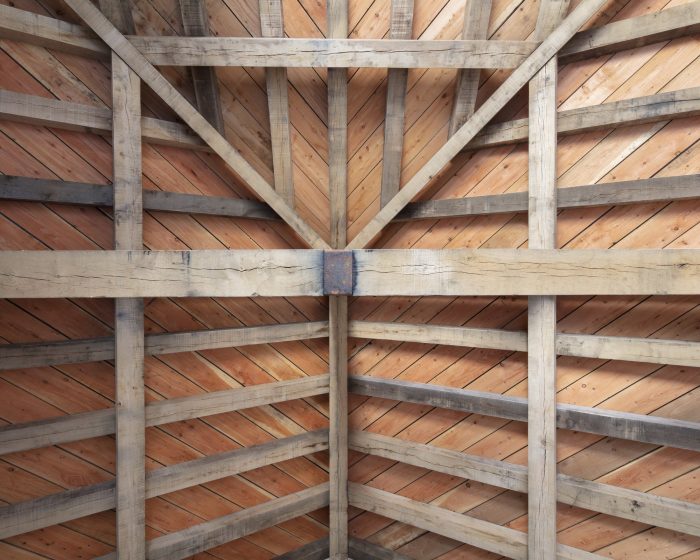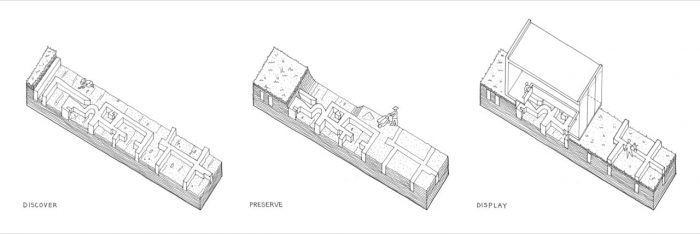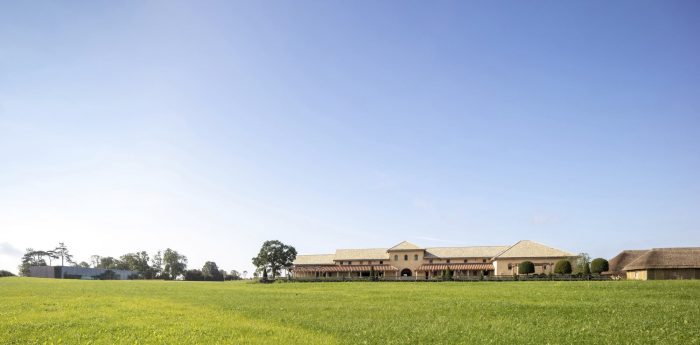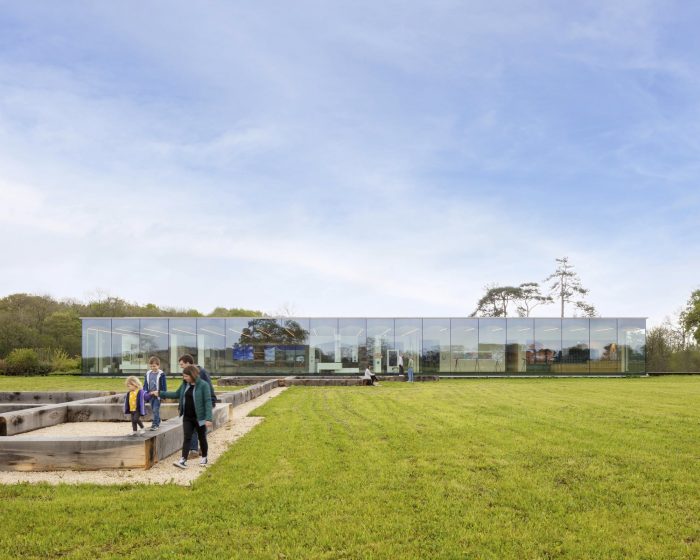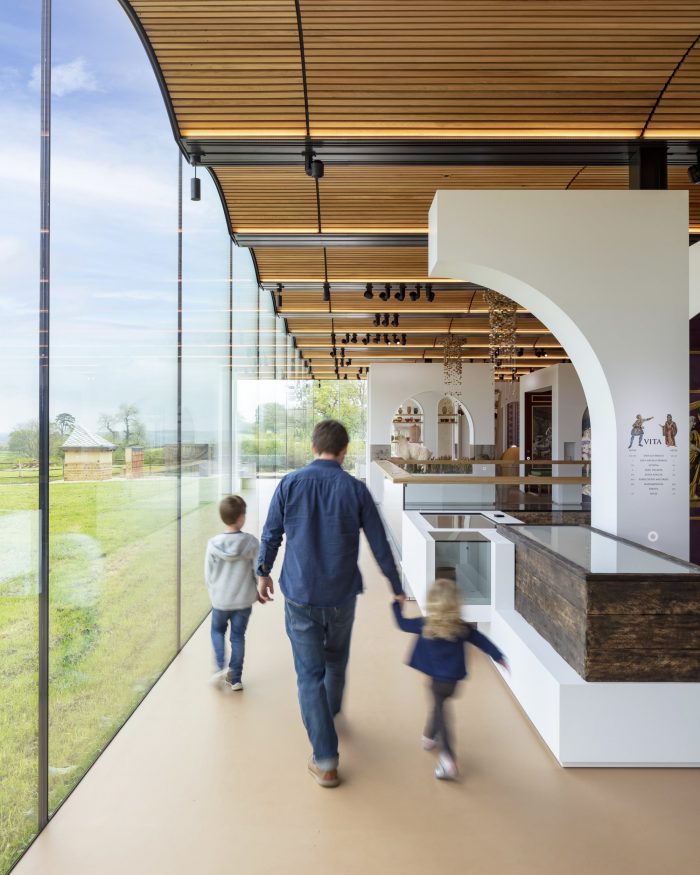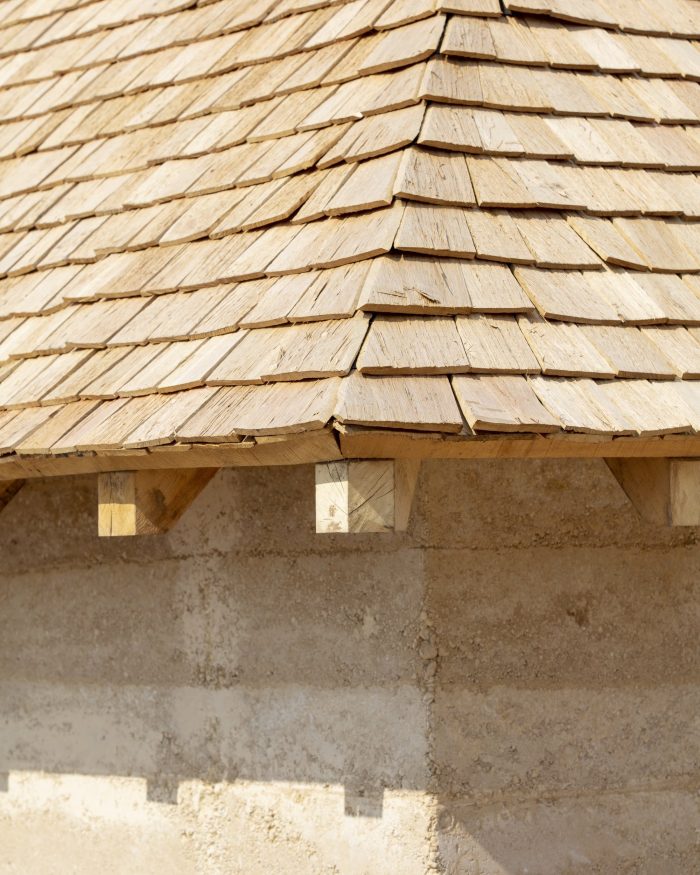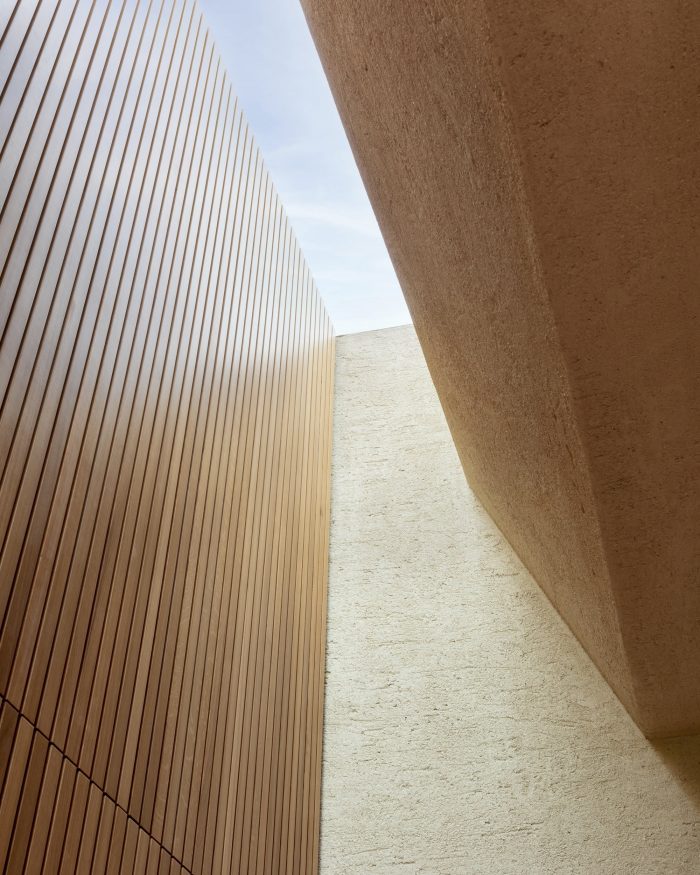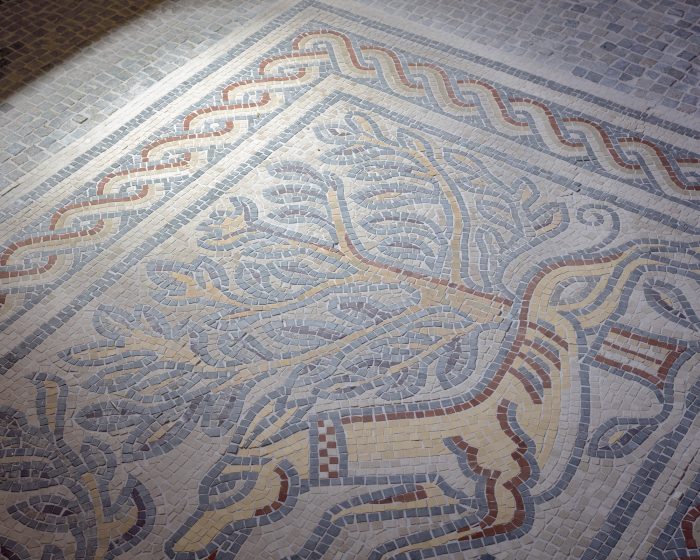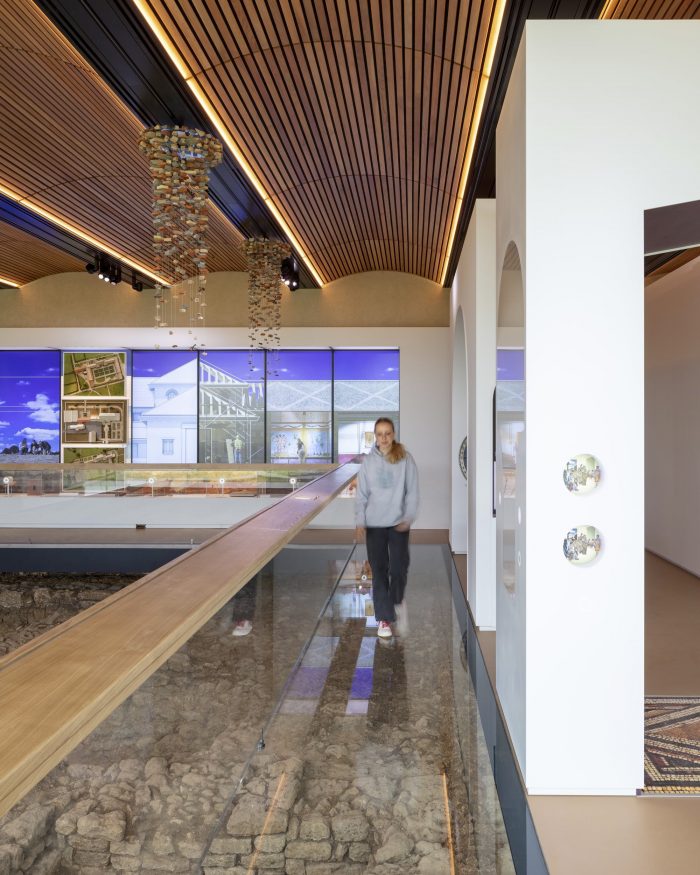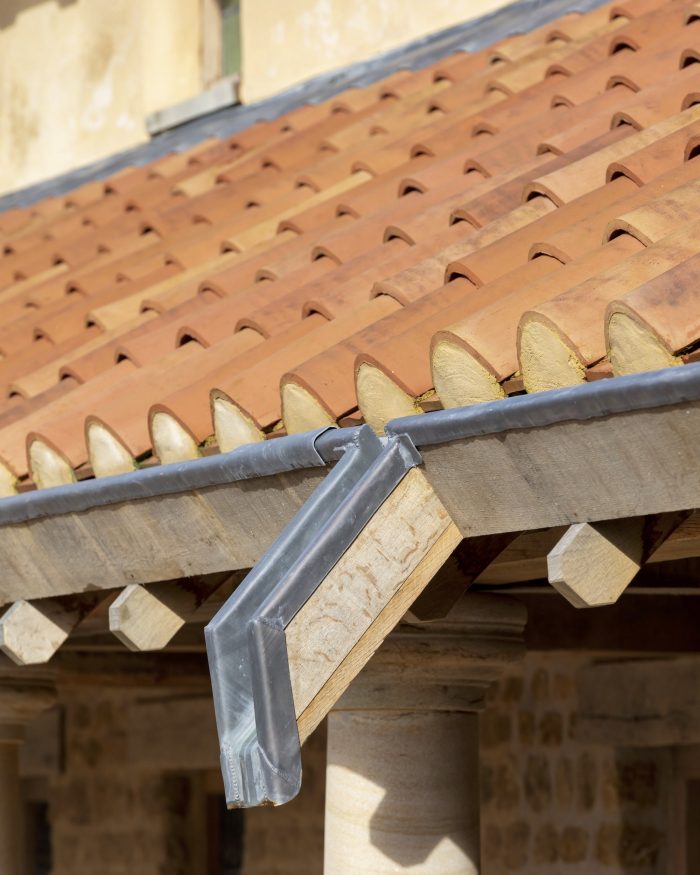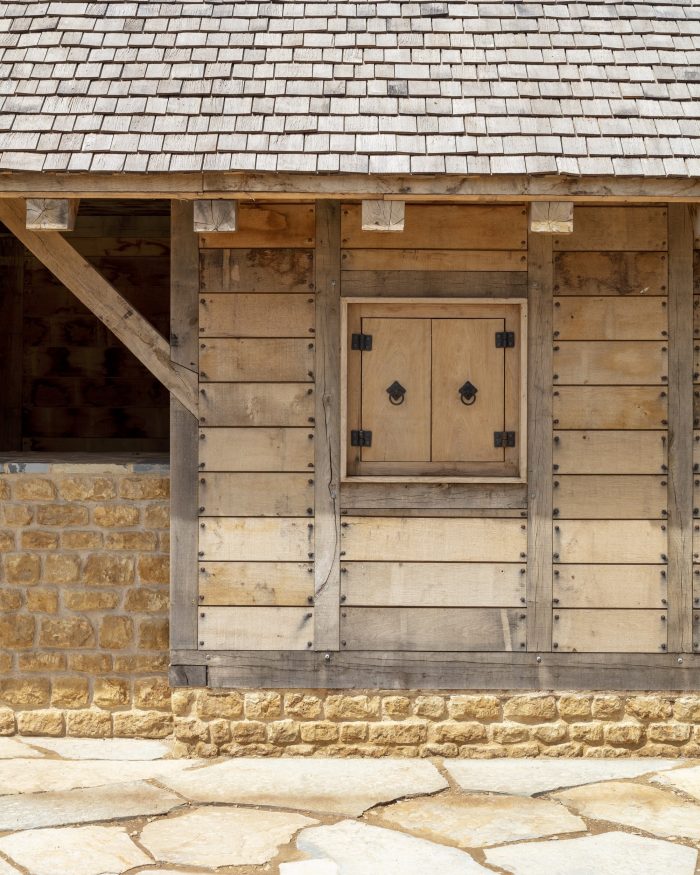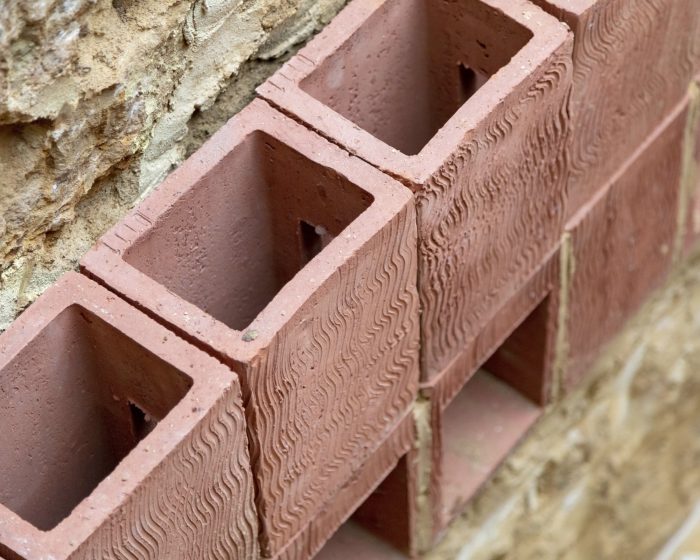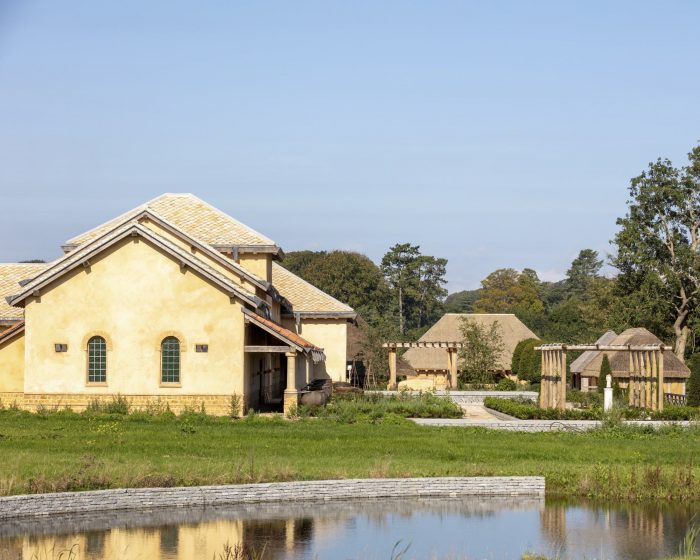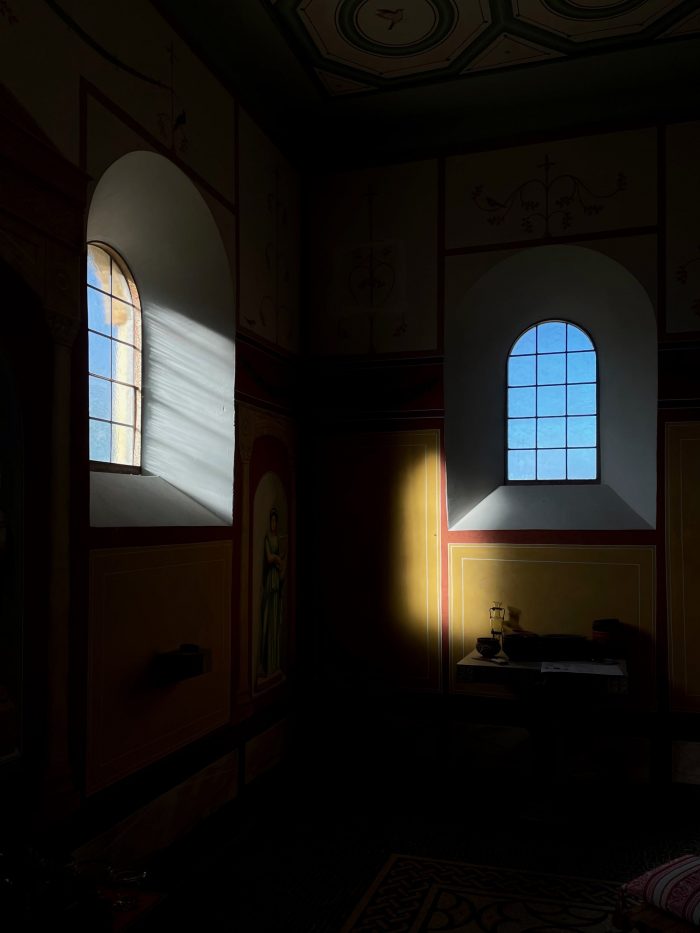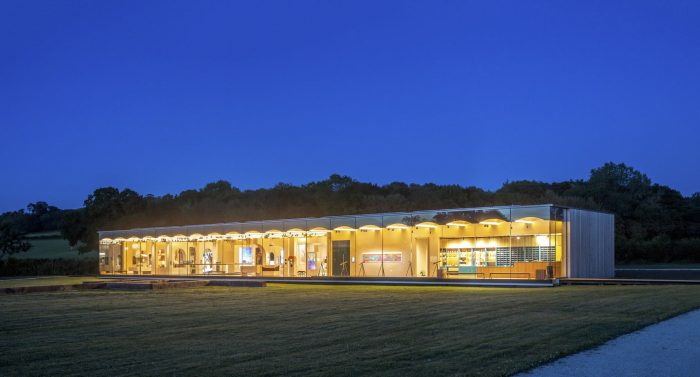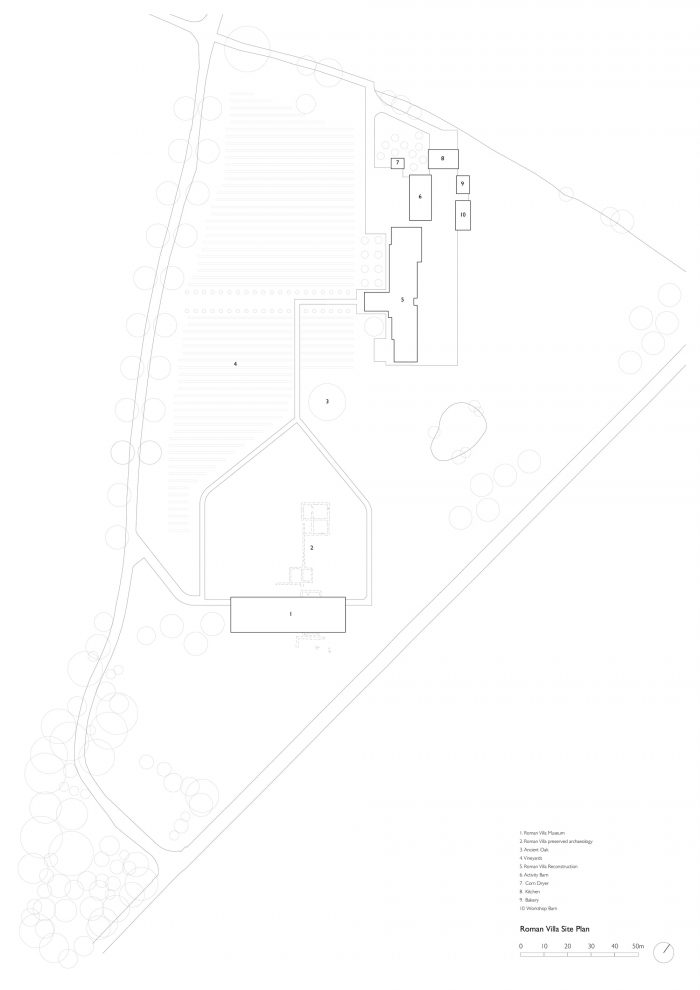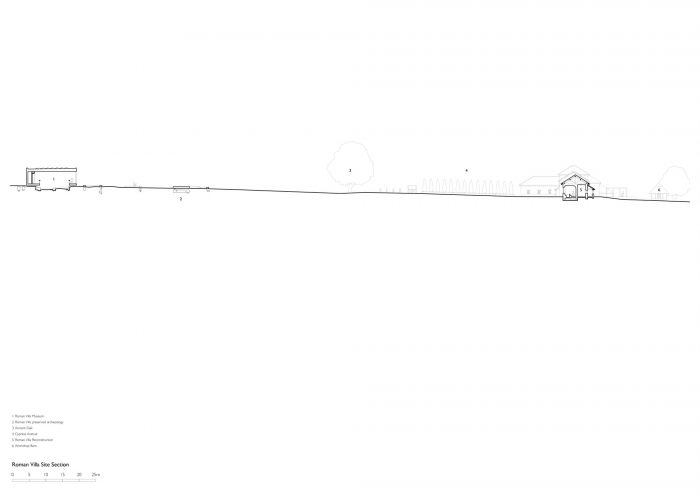从一个简单、优雅的玻璃立面来看,罗马别墅博物馆的视野集中在重新诠释哈德斯彭罗马别墅遗址的景观上。
From a simple, elegant glass elevation, the Roman Villa Museum focuses its view towards a landscape which reinterprets the ruins of Hadspen Roman Villa.
罗马别墅博物馆保护和展示这些考古发现,以扩大我们对罗马英国的了解。别墅的一部分,包括澡堂,在博物馆的中心位置展出。从罗马别墅博物馆可以随时看到罗马别墅的全比例重建。剩余的部分别墅遗迹已被重新掩埋保存。上面俏皮的景观设计让游客可以欣赏到下面遗迹的全部规模。重建的罗马别墅使我们能够通过对罗马建筑技术的详细研究,探索我们对工艺、背景和历史的热情,创造一个1:1的工艺品。
The Roman Villa Museum conserves and displays these archaeological finds in order to extend our knowledge of Roman Britain. A portion of the Villa, including the bath house, is on view in the centre of the Museum. A full scale reconstruction of the Roman Villa is viewed at all times from the Roman Villa Museum. The remaining part of the Villa remains have been re-buried for preservation. Playful landscape design above allows visitors to appreciate the full scale of the remains below. The reconstructed Roman Villa enabled us to explore, through detailed research of Roman building techniques, our passion for craft, context and history in the creation of a 1:1 artefact.
对我们来说,该别墅是对各种建筑的学习和探索,如使用现场的粘土的夯土、茅草、橡木瓦片和瓦片。在内部,Pilae烟囱在地板下形成了一个空洞。陶土管排列在内壁上,使热空气从高炉上升到建筑内。博物馆的设计延续了我们对创造展览体验的兴趣,这种体验不仅仅是孤立的,而是向外看,并与他们所在的更广泛的景观相联系。
The Villa became for us a learning exploration of constructions as varied as rammed earth, thatch, oak shingles and wattle and daub using clay from the site. Internally pilae stacks form a hypocaust void beneath the floor. Terracotta tubuli line the internal walls to allow hot air to rise through the building from the hypocaust. The Museum design continues our interest in creating exhibition experiences that are not solely insular but look out and connect to the wider landscape in which they are situated.
博物馆旨在成为一个 “背景建筑”,并与上方的景观和天空相呼应。它漂浮在地面上,以便为下面的考古学提供空间。所有的排水系统都在地面上。
The Museum is intended to be a “background building” and is recessive to the landscape and sky above. It floats above the ground to allow space over the archaeology below. All drainage is above the ground.
博物馆50米长的玻璃立面没有可见的固定装置和结构,并采用了玻璃间隔,目的是为了不分散内部和外部展品的注意力。结构和服务被一个拱形的橡木衬里的天花板所掩盖,它最大限度地提高了可用的高度,并提供了罗马建筑的几何形状的感觉。触感良好的粘土灰泥衬托着内墙,调节着内部的湿度。
The 50m long glazed elevation of the Museum is free from visible fixings and structure and incorporates glass spacers, with the intention to not distract from the internal and external exhibits. Structure and services are concealed by a vaulted oak lined ceiling which maximises the available height and provides a sense of the geometries of Roman architecture. A tactile clay plaster lines the internal walls and regulates internal humidity levels.
展览设计是围绕着罗马别墅的裸露废墟进行的。一个甜栗顶的栏杆在废墟上排列,以最小的固定装置和无垂直支撑,最大限度地扩大了视野。
The exhibition design is centred around the exposed ruins of the Roman Villa. A sweet chestnut topped balustrade lines the ruins and maximises the views through with minimal fixings and no vertical supports.
环境设计的重点是控制湿度和温度。电力是主要的能源来源。这是由位于屋顶的光伏阵列补充的,它能够抵消建筑的年度电力消耗,有效地使其成为零碳运营。
The environmental design focuses on controlling humidity and temperature. Electricity is the primary energy source. This is supplemented by a photovoltaic array located on the roof, which is capable of offsetting the annual electrical consumption for the building, effectively making it zero carbon operationally.
博物馆采用轻质结构,具有高水平的绝缘、气密性和高性能玻璃,以控制太阳辐射。一个建筑管理系统监控着空间的状况。供暖和制冷是通过基于冷媒热泵的系统实现的,该建筑不使用化石燃料。该系统为展览装修提供了一个灵活的方法,使展品可以改变,而不需要对建筑的基础设施进行重大修改。
The Museum is of lightweight construction, with high levels of insulation, air tightness and high performance glazing to control solar gains. A building management system monitors the conditions of the space. Heating and cooling is achieved using a refrigerant heat pump based system and the building is fossil fuel free. The system provides a flexible approach for exhibition fit out to allow the exhibits to be changed without requiring major amendments to the infrastructure of the building.
这样一个独特而雄心勃勃的项目的成功,有赖于与我们的姐妹公司Stonewood Builders的密切合作。
The success of such a unique and ambitious project relied on the close working with our sister company Stonewood Builders.
Architects: Stonewood Design
Area : 1530 m²
Year : 2021
Photographs :Craig Auckland, Thijs Wolzak
Manufacturers : Benchmark Furniture, Cantifix, Clayworks, Allgood, Bauder, Craybourne Carpentry, Donkeywell Forge, Farmington Stone, Glasswood, Hadspen Quarry, Histoglass, Knight & Riddell Plastering, Make by Design, Nigel Bunce Thatcher, Oakwrights Joinery, Polydeck Resins, Rio Pools, Robert Flemming Masonry and Conservation Ltd , Rose Engineering, Sally Strachey Historic Conservation (SSHC)
Mechanical And Electrical Engineering : E3 Consulting Engineers
Main Contractor : Stonewood Design
Quantitative Surveyor : Synergy
Planning Consultants : AZ Urban Studios
Glazing : Glass Light and Special Structures
Structural Engineering : Hydrock
Civil Engineering : Hydrock
Fire Engineering : Hydrock
Transportation : Hydrock
Principal Designer : Hydrock
Archaeology : South West Heritage
Building Control Consultant : Oculus
Timber Framing : The Timber Framing Company
Exhibition Designer : Kossmann de Jong
City : Hadspen
Country : United Kingdom

